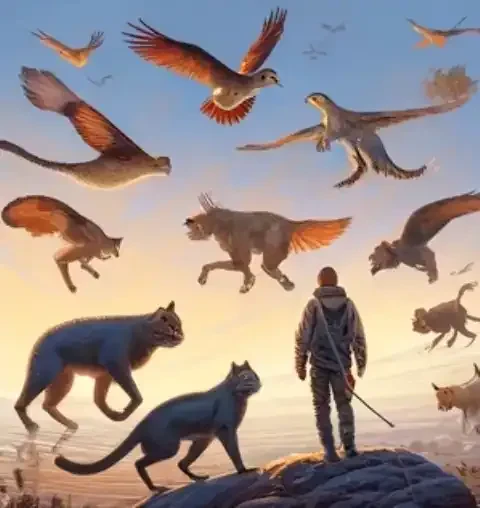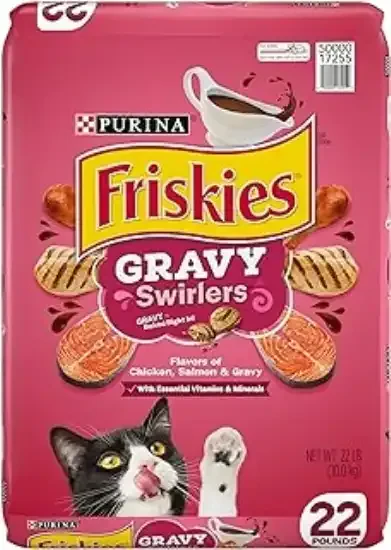Introduction
Cats have walked alongside humans for thousands of years, weaving themselves into the fabric of our societies and leaving an indelible mark on our history. From the regal cats of ancient Egypt to the beloved pets of modern households, their presence has been both ubiquitous and profound.
Throughout history, humans and cats have shared a complex relationship, evolving from mere coexistence to deep companionship. Cats were initially drawn to human settlements by the promise of shelter and a steady food supply, while humans benefited from their natural pest control abilities. Over time, cats became integral parts of households, revered for their grace, independence, and enigmatic nature.
Understanding the origins of domestic cats is paramount to unraveling the intricacies of this enduring relationship. By tracing their evolutionary journey from wild ancestors to cherished companions, we gain insights into the processes of domestication, adaptation, and coevolution. Exploring the origins of domestic cats allows us to appreciate the depth of our connection with these fascinating creatures and sheds light on the mutual influences that have shaped both human and feline societies.
In this article, we will embark on a journey through time to explore the origins of our feline companions. From the ancient civilizations that worshipped them to the scientific discoveries that illuminate their genetic heritage, we will uncover the rich tapestry of history woven by cats and humans alike. Through this exploration, we hope to deepen our understanding of the bond between humans and cats while gaining a newfound appreciation for the remarkable journey that has brought these two species together.
The Wild Ancestors
Introduction to wild feline species:
Wild feline species, ranging from the majestic lion to the elusive ocelot, inhabit diverse ecosystems across the globe. These apex predators exhibit a wide range of adaptations suited to their respective habitats, from the agile climbers of the rainforest canopy to the stealthy hunters of the savannah plains.
Key characteristics of wild cats and their habitats:
Wild cats possess a set of common characteristics that distinguish them as formidable predators. These include keen senses, retractable claws, and a muscular build adapted for stalking and pouncing. Their habitats vary greatly, encompassing forests, grasslands, deserts, and even urban environments, reflecting their remarkable adaptability.
Common ancestors of domestic cats:
The domestic cat, Felis catus, traces its lineage back to a common ancestor shared with other members of the Felidae family. Genetic evidence suggests that this ancestor likely lived in the Near East region around 9,000 years ago. From this ancestral lineage, various subspecies and populations of wildcats contributed to the diverse genetic makeup of domestic cats.
The process of domestication and its significance:
Domestication represents a gradual process whereby wild animals adapt to living in close proximity to humans, often resulting in changes in behavior, morphology, and genetics. The domestication of cats likely began as a mutualistic relationship, with early agricultural societies benefiting from cats' pest control abilities while providing them with food and shelter.
The significance of domestication lies in the profound transformation of wild animals into domestic companions, marking a pivotal moment in human history. For cats, domestication led to the emergence of unique traits such as increased sociability, reduced fear response, and a diverse array of coat colors and patterns. Understanding this process illuminates the origins of our feline companions and highlights the dynamic interplay between humans and cats throughout history.
Ancient Cat Cultures
Early evidence of cat-human interactions:
Archaeological evidence suggests that cats and humans have shared a close relationship for millennia. From the discovery of cat remains buried alongside humans in ancient graves to depictions of cats in prehistoric art, these findings attest to the deep connections between humans and cats in antiquity.
Cats in ancient Egypt: role, symbolism, and reverence:
Ancient Egypt stands out as one of the most iconic civilizations in its reverence for cats. Cats were associated with the goddess Bastet, who represented fertility, motherhood, and protection. They were revered as sacred beings, often depicted in art and mythology. Cats played practical roles in Egyptian society as well, serving as guardians of granaries and hunters of vermin.
Cats in other ancient civilizations: Mesopotamia, China, and Greece:
Cats also held significance in other ancient civilizations. In Mesopotamia, cats were associated with the goddess Ishtar and were valued for their ability to protect crops from pests. In China, cats were esteemed for their role in controlling rodent populations and were sometimes depicted in artwork alongside mythical creatures. Ancient Greece revered cats as symbols of stealth and independence, associating them with the goddess Artemis and other deities.
Exploration of how cats were perceived and integrated into human society:
Across these ancient cultures, cats were perceived as both practical and symbolic entities. They were valued for their hunting prowess, their ability to control vermin, and their role in protecting food stores. Moreover, cats were imbued with symbolic meanings related to femininity, fertility, and divine protection. Their integration into human society extended beyond mere utility, reflecting a deeper spiritual and cultural significance. By understanding the roles and perceptions of cats in ancient civilizations, we gain insight into the evolving dynamics of human-cat relationships throughout history.
Cats in Medieval Europe
Shift in the perception of cats during the Middle Ages:
The medieval period witnessed a notable shift in the perception of cats in Europe. While cats had been revered in ancient civilizations like Egypt, their status changed during the Middle Ages as superstitions and fear began to overshadow their previous reverence.
Cats and superstitions: from witches to protectors:
Cats became associated with superstitions and folklore during the Middle Ages, often depicted as familiars of witches or agents of dark magic. Black cats, in particular, were viewed with suspicion and fear, believed to be harbingers of misfortune or even servants of the devil. Despite these negative connotations, cats also retained some positive associations, with tales of cats protecting households from evil spirits or bringing good luck.
Cats in literature, art, and folklore during medieval times:
Medieval literature and art often reflected the ambivalent attitudes towards cats. While some works portrayed cats as symbols of cunning and deceit, others depicted them as loyal companions or guardians. Cats featured prominently in medieval folklore, with stories of shape-shifting witches, talking cats, and mystical felines permeating the cultural imagination.
Influence of medieval attitudes on modern perceptions of cats:
The medieval attitudes towards cats have left a lasting impact on modern perceptions. The association of cats with witches and superstitions persists in popular culture, shaping how cats are often portrayed in literature, film, and folklore. Despite advancements in understanding feline behavior and genetics, remnants of medieval fears and beliefs continue to color societal views of cats, highlighting the enduring power of historical narratives. By examining the medieval perception of cats, we can gain insight into the interplay between culture, folklore, and human-animal relationships, and better understand the complexities of our enduring fascination with these enigmatic creatures.
The Renaissance and Beyond
Renaissance: Cats as symbols of luxury and refinement:
During the Renaissance period, cats experienced a resurgence in popularity among the elite classes of Europe. Cats were admired for their elegance and grace, often depicted in paintings and sculptures as symbols of luxury and refinement. They were cherished companions in the palaces of nobility, where they lounged in opulent surroundings and were pampered by their wealthy owners.
Cats in the Age of Exploration: companions aboard ships:
As European explorers set sail to distant lands during the Age of Exploration, cats became indispensable companions aboard ships. Valued for their ability to control vermin that infested the cargo holds, cats played a crucial role in protecting food supplies and preventing the spread of disease. Their presence provided comfort and companionship to sailors during long and arduous voyages across the seas.
Cats in the Industrial Revolution: from pest control to companionship:
The Industrial Revolution brought about significant changes in human society, including shifts in the roles and perceptions of cats. With the rise of urbanization and industrialization, cats continued to serve as efficient pest controllers in factories, warehouses, and homes. However, they also began to be recognized for their companionship and emotional support, as people sought solace amidst the rapid pace of technological advancement.
Evolution of the modern domestic cat breeds:
The modern era has seen the emergence of diverse domestic cat breeds through selective breeding and hybridization. From the sleek Siamese to the fluffy Persian, each breed boasts its own unique characteristics and personality traits. The evolution of modern domestic cat breeds reflects the changing preferences and lifestyles of human companions, as well as advancements in veterinary science and breeding practices. Today, domestic cats continue to enrich our lives as beloved pets, providing comfort, companionship, and endless entertainment.
Scientific Insights
Genetic studies on the origins of domestic cats:
Modern genetic studies have provided valuable insights into the origins and evolution of domestic cats. By analyzing DNA from domestic cats and their wild relatives, researchers have traced the genetic lineage of domestic cats back to their wild ancestors. These studies have shed light on the patterns of domestication, the geographic origins of different cat populations, and the genetic diversity within domestic cat breeds.
The role of natural selection and human intervention in cat evolution:
Natural selection has played a significant role in shaping the evolution of cats, both in the wild and in domestic environments. Traits that conferred advantages in survival and reproduction, such as hunting prowess and camouflage, were favored by natural selection. Additionally, human intervention through selective breeding has further influenced the evolution of domestic cat breeds, leading to the emergence of distinct physical characteristics and behavioral traits.
Insights from archaeological discoveries:
Archaeological discoveries provide valuable clues about the early interactions between humans and cats. Excavations of ancient sites have uncovered cat remains buried alongside humans, as well as artifacts depicting cats in art and symbolism. These findings offer glimpses into the roles and perceptions of cats in ancient societies, providing important context for understanding the domestication process and the cultural significance of cats throughout history.
Understanding feline behavior through evolutionary perspectives:
Evolutionary perspectives offer insights into the behavioral adaptations of domestic cats and their wild relatives. By examining the behaviors of wild felids in their natural habitats, researchers can better understand the instincts and behaviors exhibited by domestic cats. Evolutionary theories help elucidate why cats engage in certain behaviors, such as hunting, grooming, and territorial marking, and how these behaviors have been shaped by their evolutionary history.
Overall, scientific studies on the origins, evolution, and behavior of domestic cats deepen our understanding of these fascinating creatures and the dynamics of human-cat relationships. By integrating genetic, archaeological, and evolutionary insights, researchers can unravel the complex interplay between biology, behavior, and culture in the evolution of our feline companions.
Cats in Contemporary Society
Cats in popular culture: from movies to memes:
Cats have become iconic figures in popular culture, with their images and antics appearing in movies, television shows, books, and internet memes. From classic films like "The Aristocats" to viral internet sensations like Grumpy Cat, cats have captured the hearts and imaginations of people worldwide. Their playful personalities, aloof demeanor, and undeniable charm make them enduring symbols of entertainment and amusement in contemporary society.
Cats as pets: their roles in modern households:
In modern households, cats play a variety of roles as beloved pets and companions. They provide comfort, companionship, and entertainment to their human counterparts, enriching the lives of millions of people around the world. Cats are valued for their independent nature, low maintenance care requirements, and ability to adapt to diverse living environments, making them popular choices for urban dwellers, families, and individuals alike.
Challenges facing domestic cat populations today:
Despite their widespread popularity, domestic cat populations face a range of challenges in contemporary society. Issues such as overpopulation, stray and feral cat populations, and lack of access to veterinary care pose significant welfare concerns for cats worldwide. Additionally, environmental threats, habitat loss, and predation by invasive species threaten wild cat populations and their ecosystems.
The future of cats: potential impacts of human activities and conservation efforts:
The future of cats hinges on the actions of humans and the success of conservation efforts aimed at protecting both domestic and wild cat populations. Sustainable management practices, responsible pet ownership, and initiatives to control overpopulation are essential for ensuring the welfare and well-being of domestic cats. Likewise, conservation efforts to protect wild cat species and their habitats are crucial for preserving biodiversity and ecosystem health.
By raising awareness of the challenges facing domestic and wild cat populations and promoting responsible stewardship of these iconic animals, we can secure a brighter future for cats in contemporary society and beyond. Through collaboration, education, and advocacy, we can foster a world where cats thrive alongside humans in harmony and respect.
Conclusion
In retracing the intricate tapestry of feline history, we have embarked on a journey spanning millennia, from the ancient civilizations that revered cats as sacred beings to the modern world where they continue to captivate our hearts and imaginations. Through the ages, cats have been our steadfast companions, adapting to our ever-changing world while retaining their enigmatic allure.
Understanding the origins of our feline companions is paramount, as it offers insights into the deep-rooted bond between humans and cats. By delving into the evolutionary processes that shaped domestic cats and exploring the cultural significance of cats throughout history, we gain a deeper appreciation for the complexities of this enduring relationship.
The importance of understanding feline origins extends beyond mere curiosity—it informs our approach to caring for and conserving these remarkable creatures. Whether as cherished pets in our homes or vital members of ecosystems in the wild, cats play integral roles in our lives and the world around us.
As we reflect on the journey through feline history, let us not forget the enduring bond between humans and cats—a bond forged through millennia of companionship, mutual respect, and shared experiences. Whether curled up on our laps or prowling through the wilderness, cats remind us of the beauty and wonder of the natural world, inspiring awe and affection in equal measure.
In closing, let us celebrate the timeless connection between humans and cats, honoring their rich history and embracing the promise of a future where cats continue to enchant and enrich our lives for generations to come.







